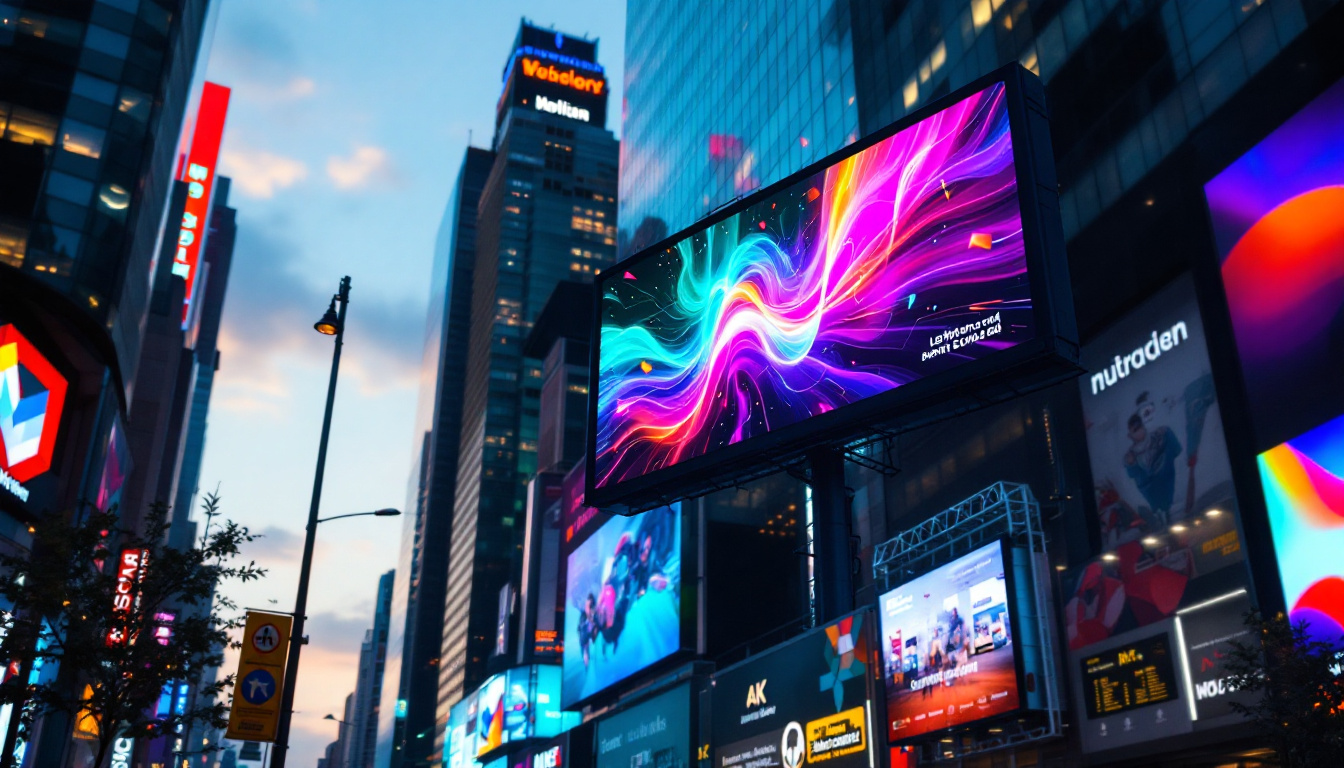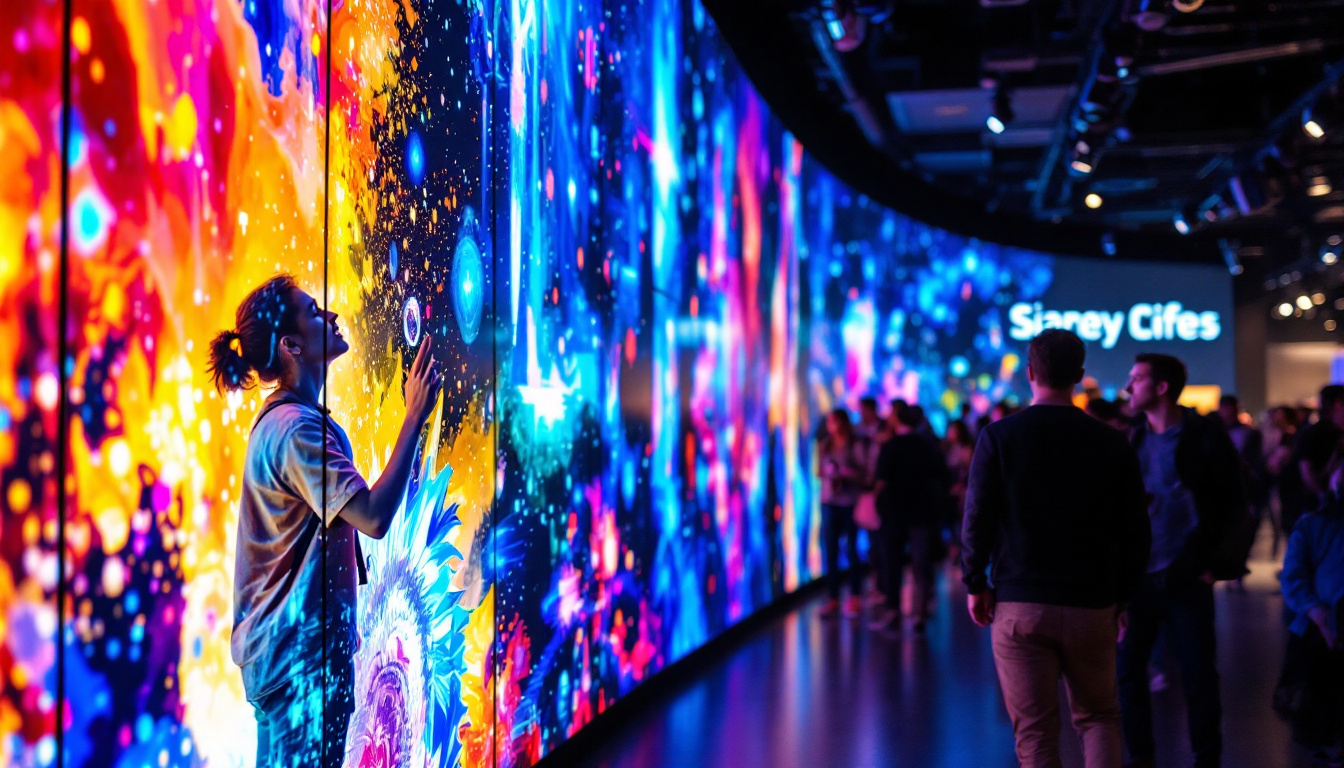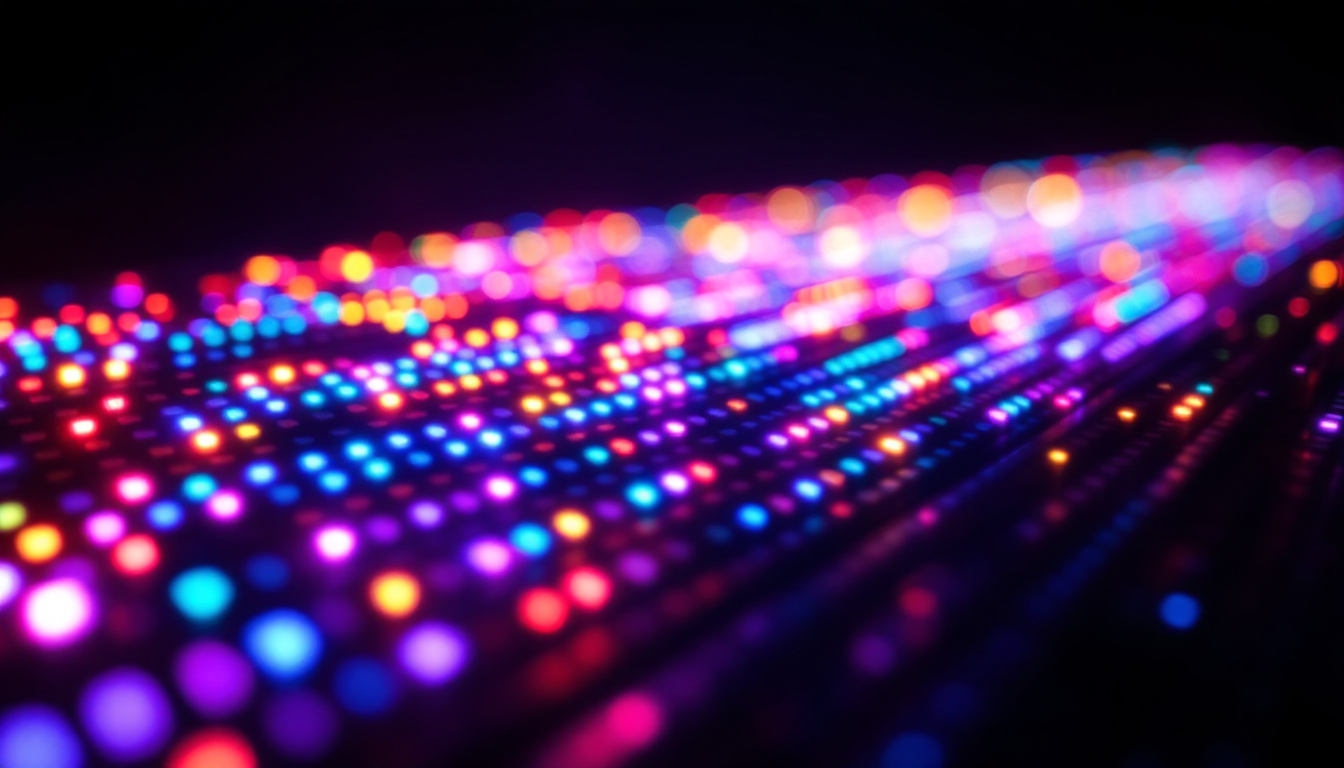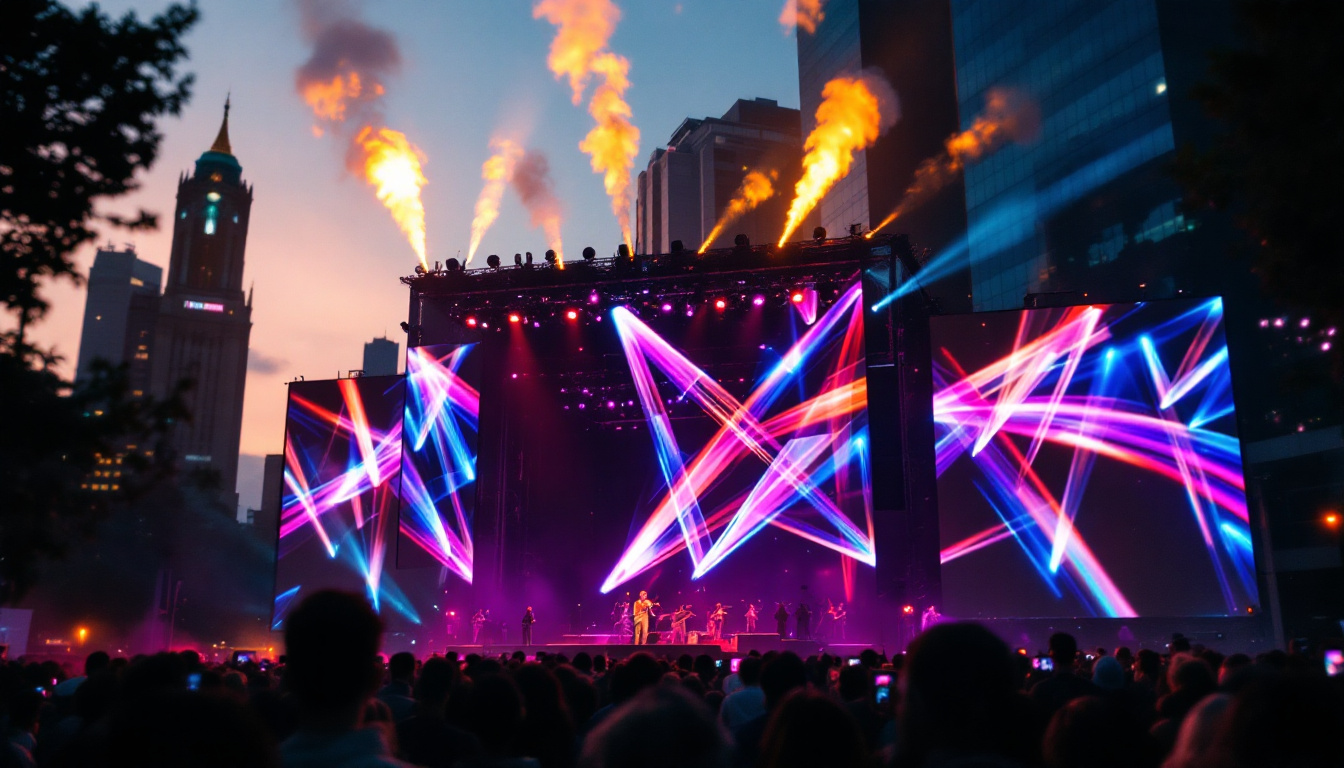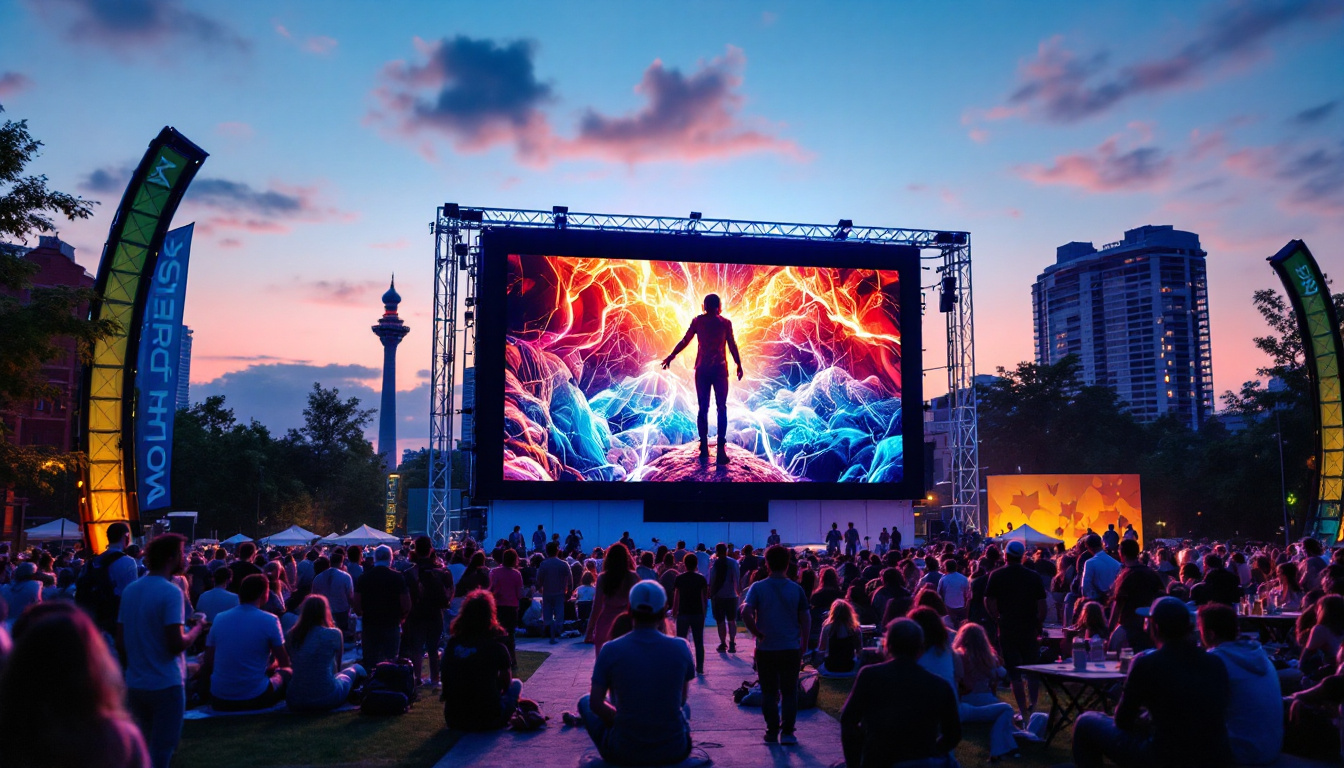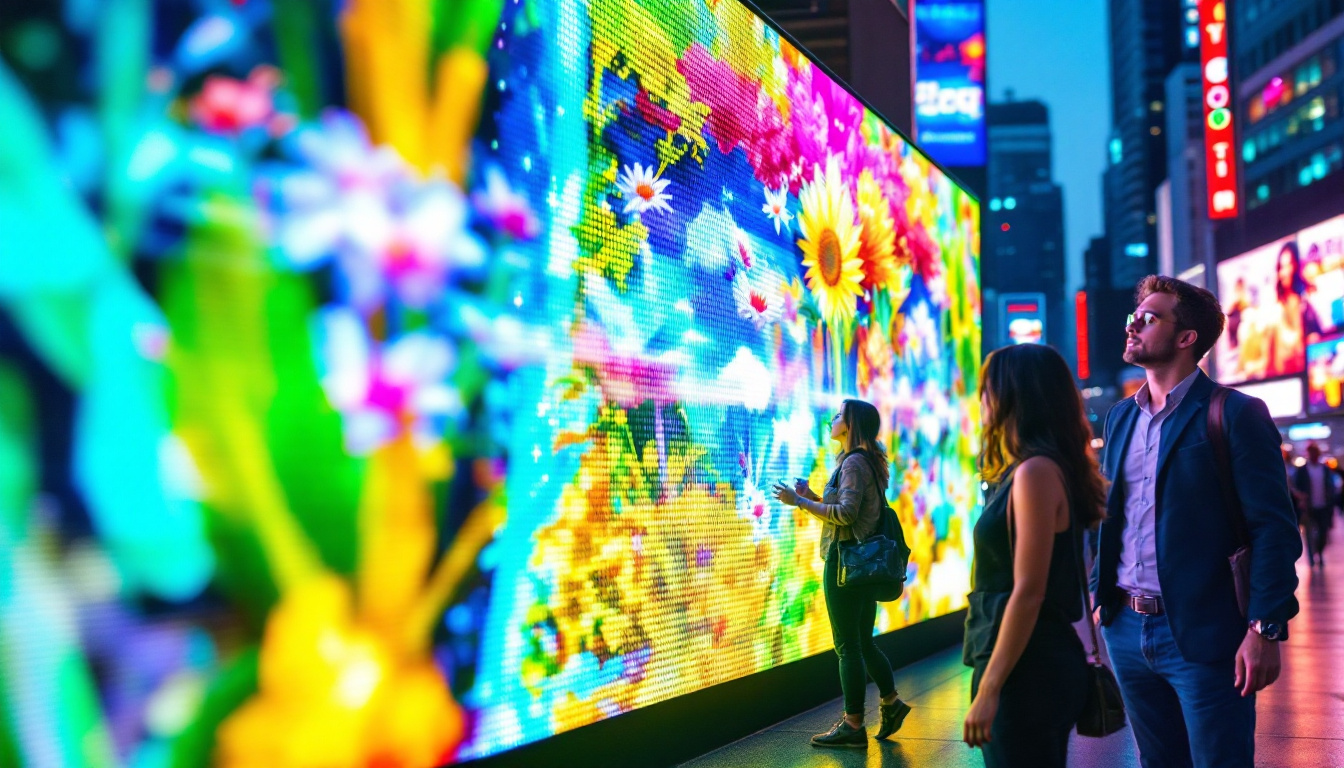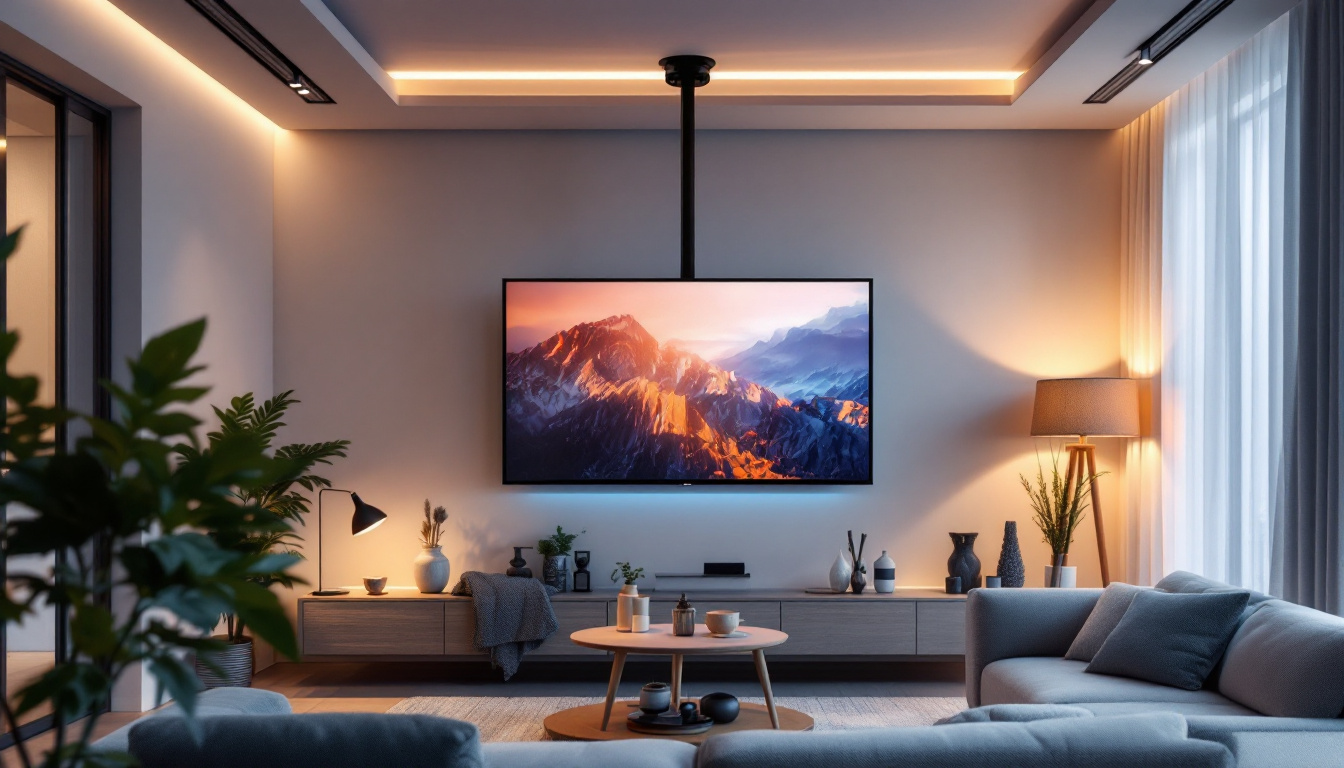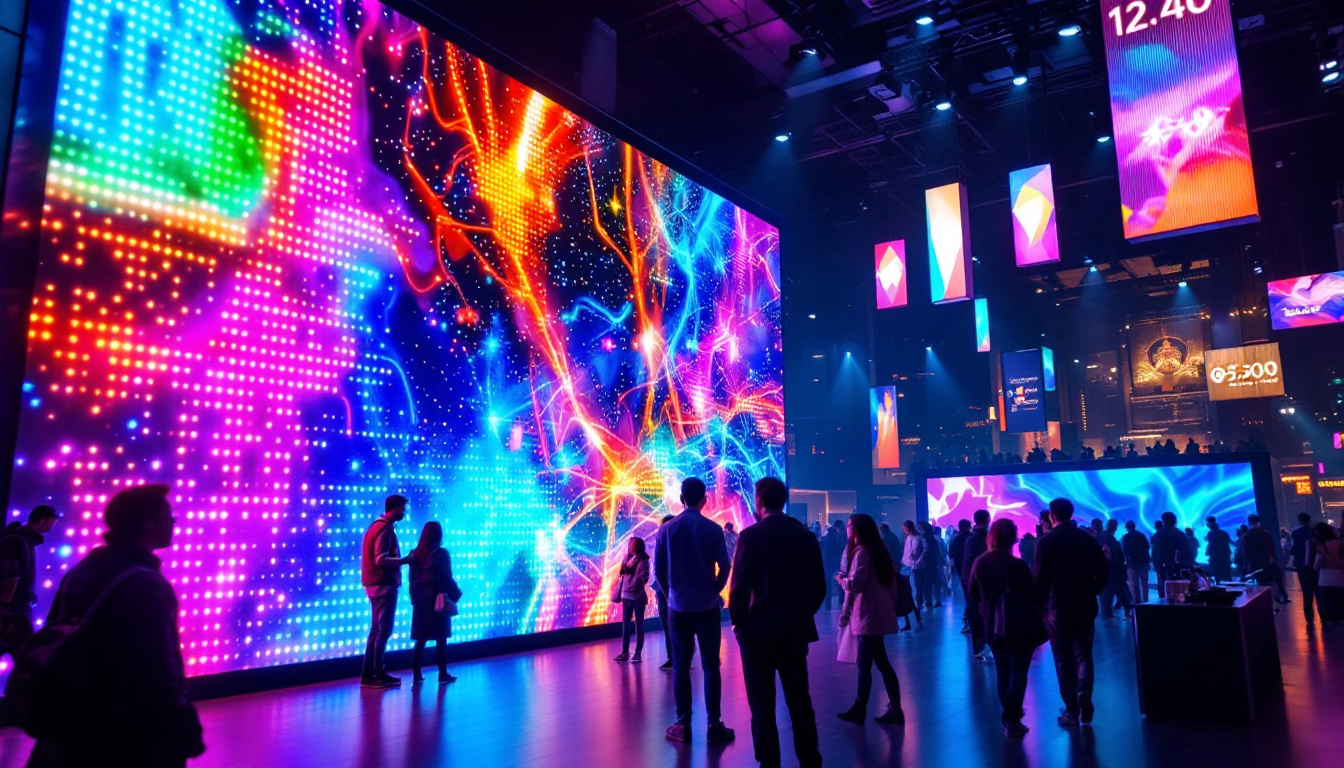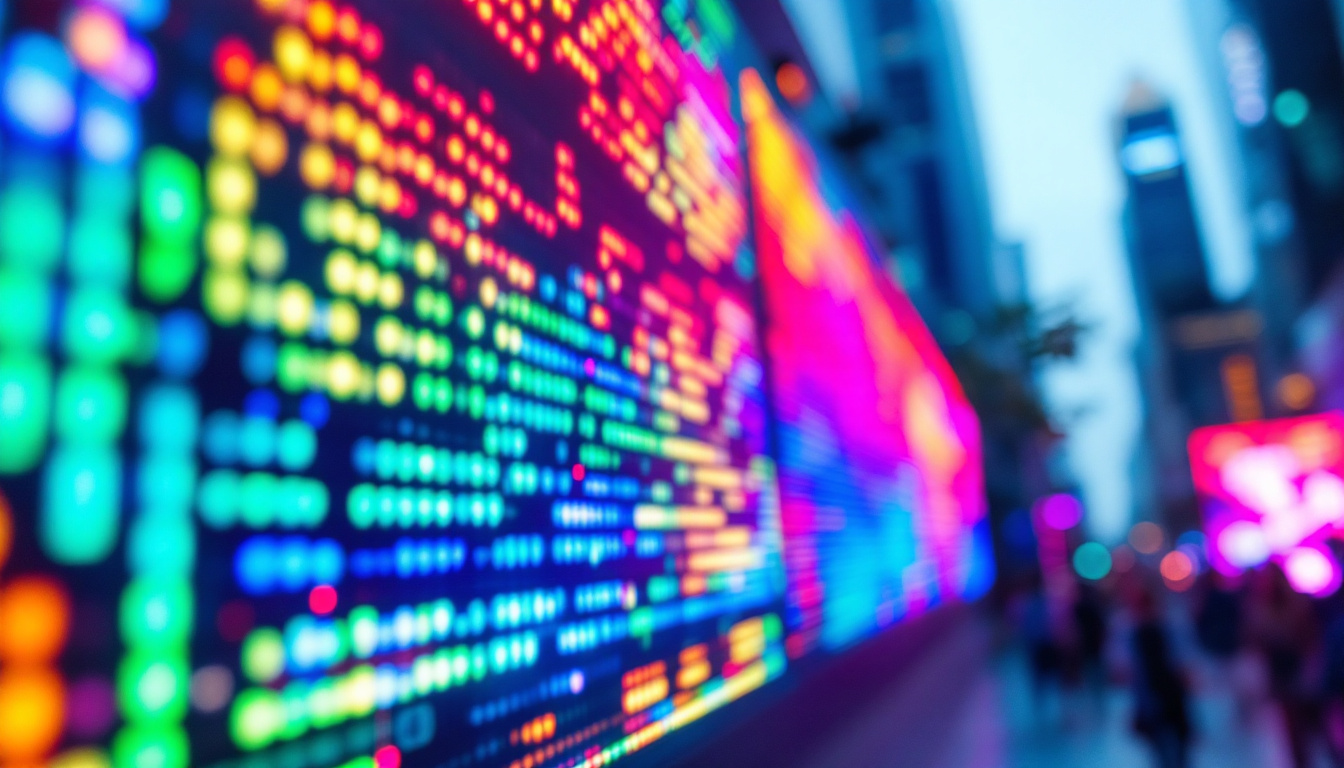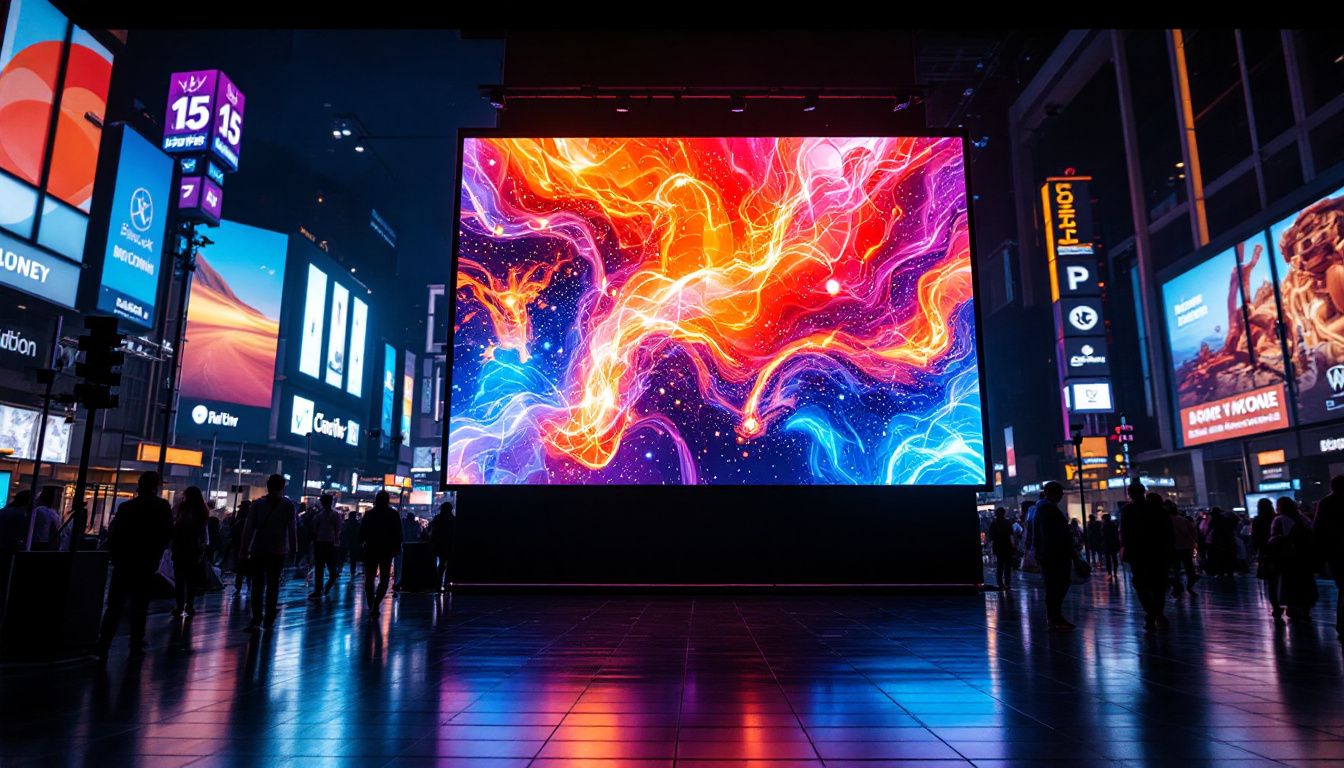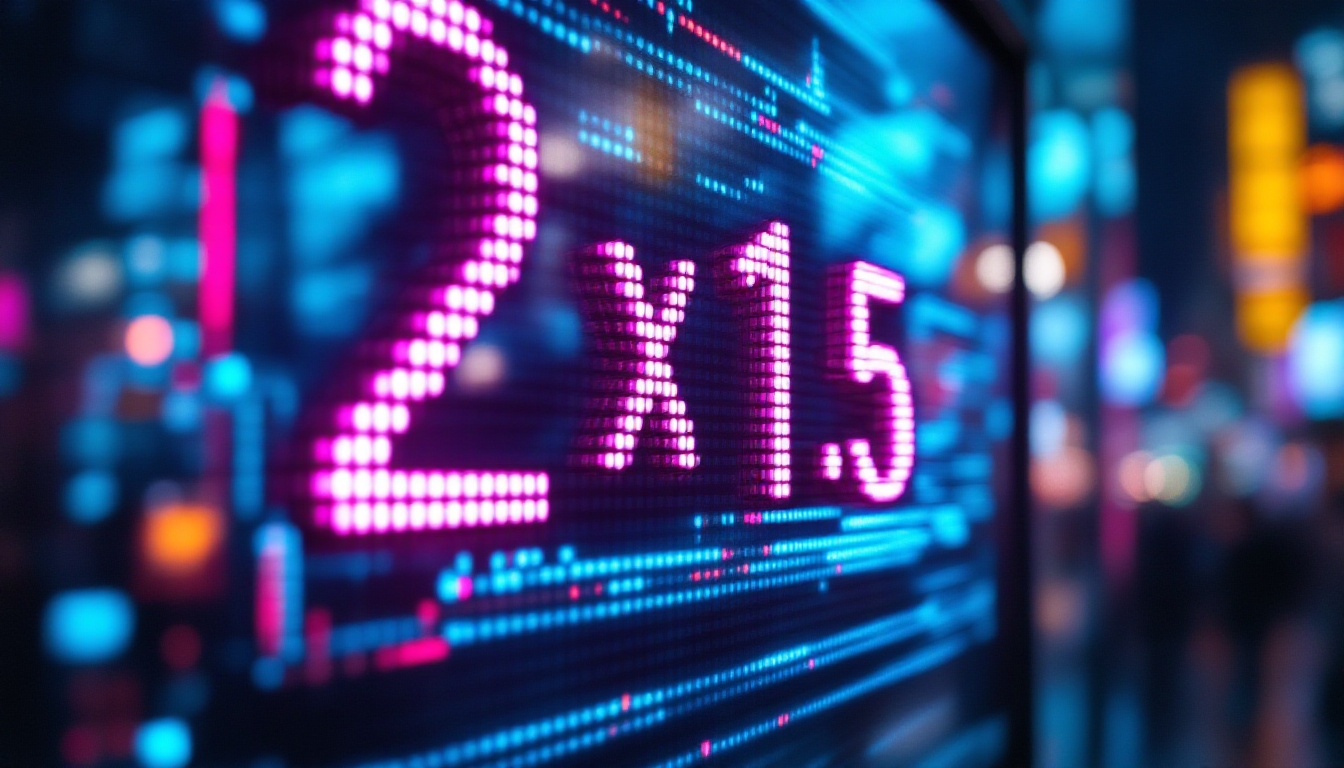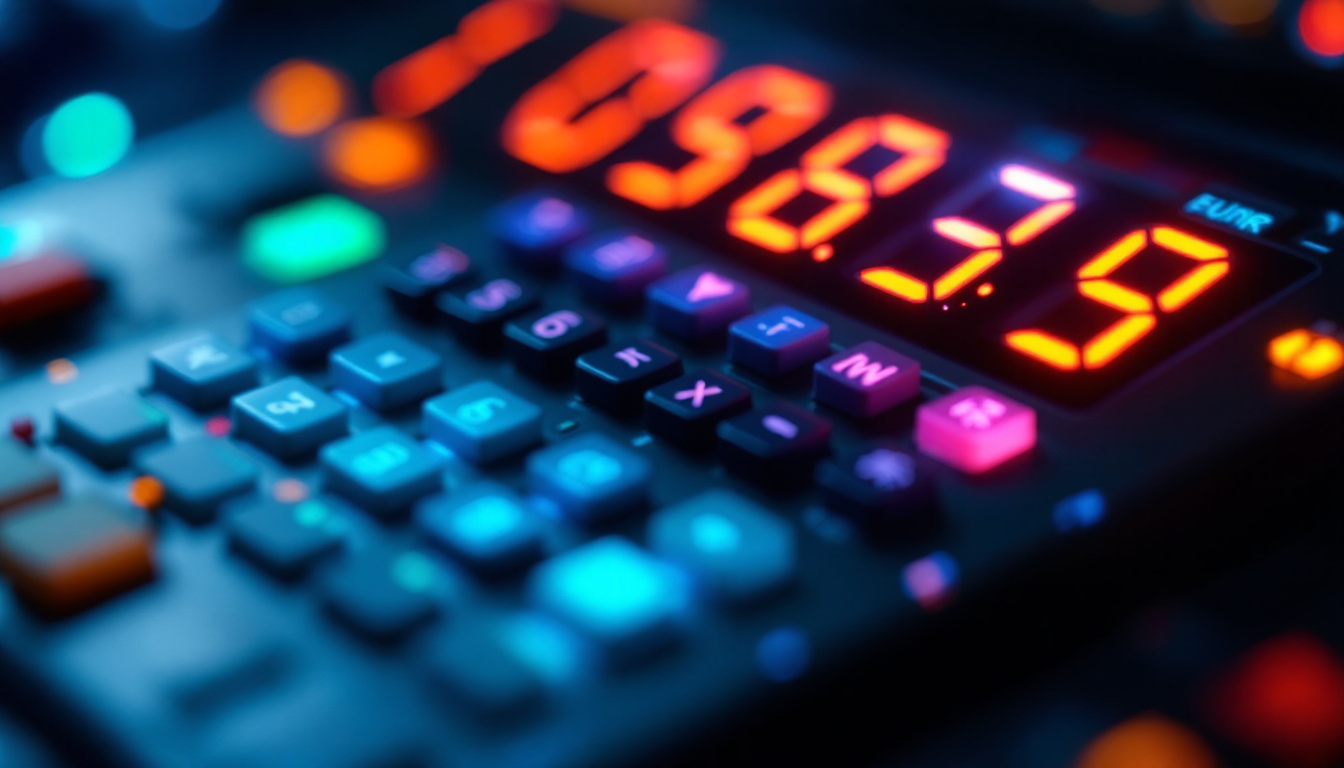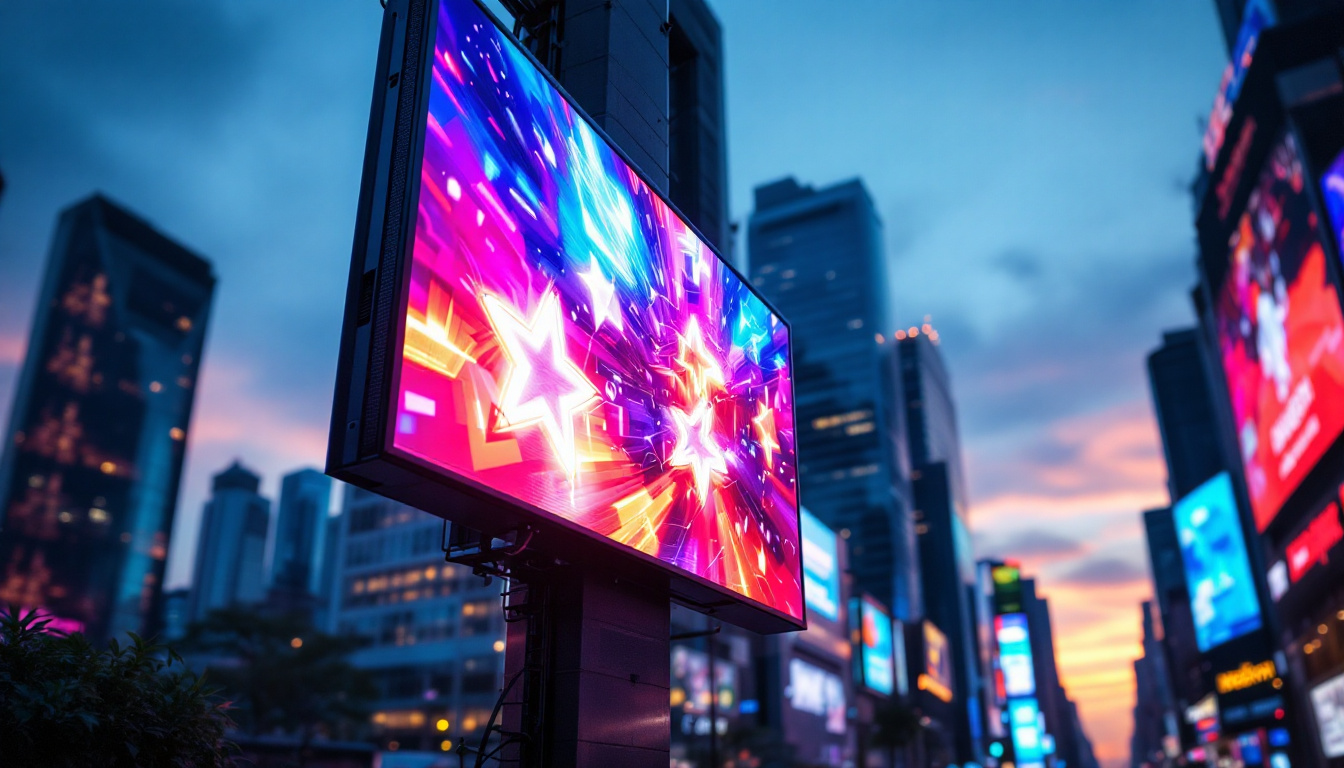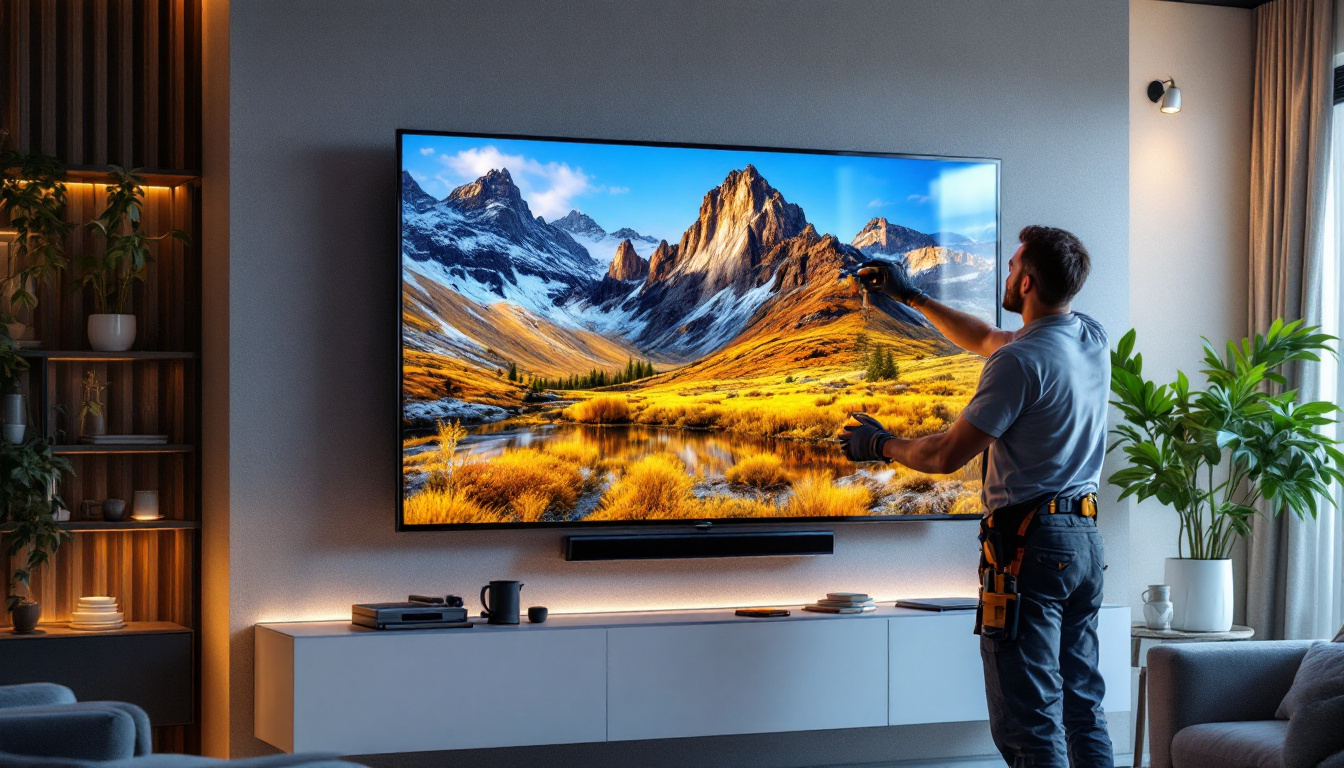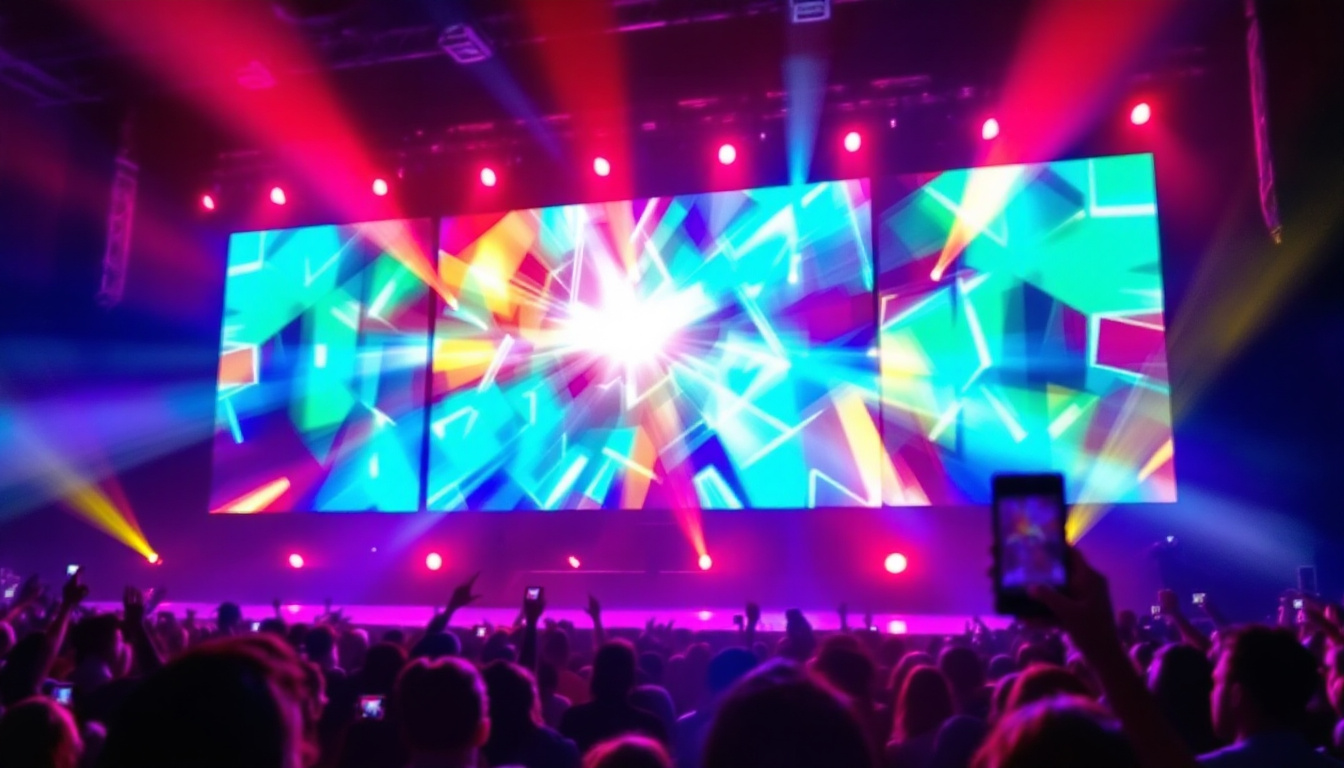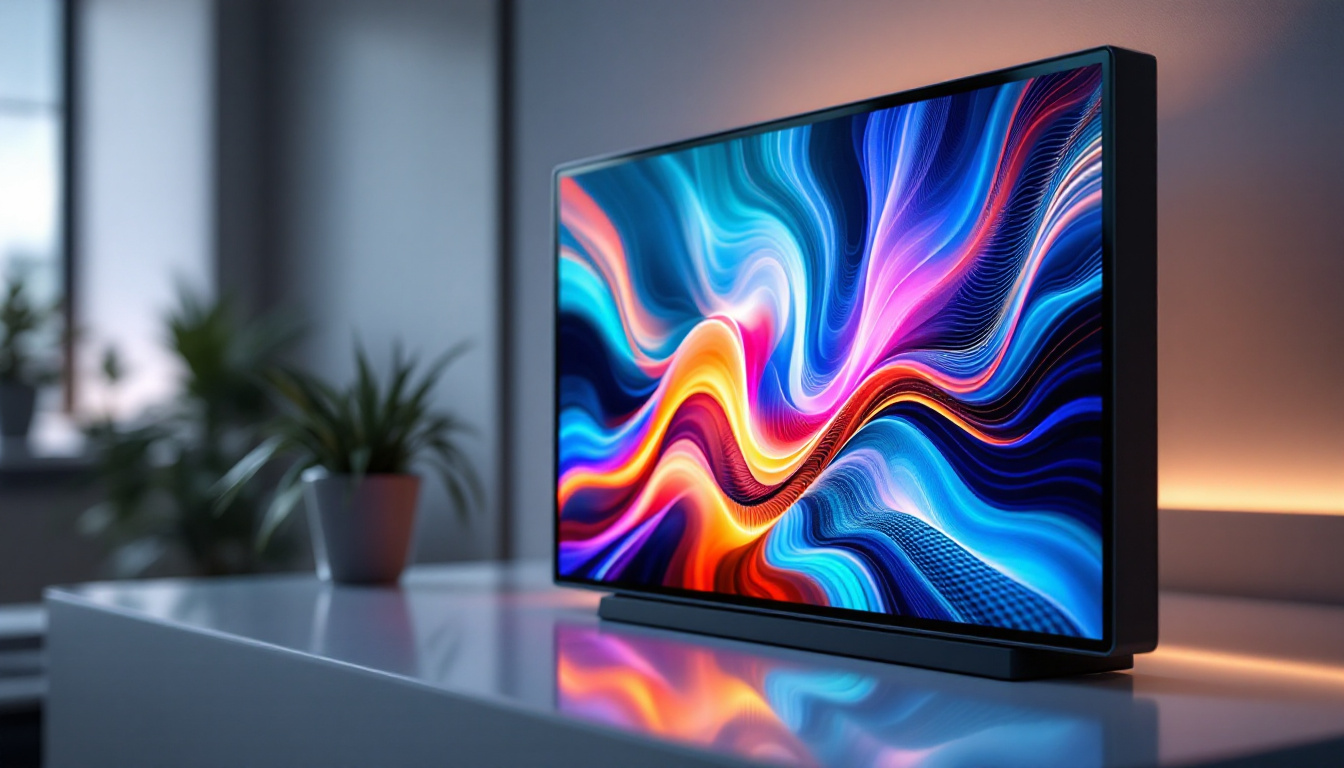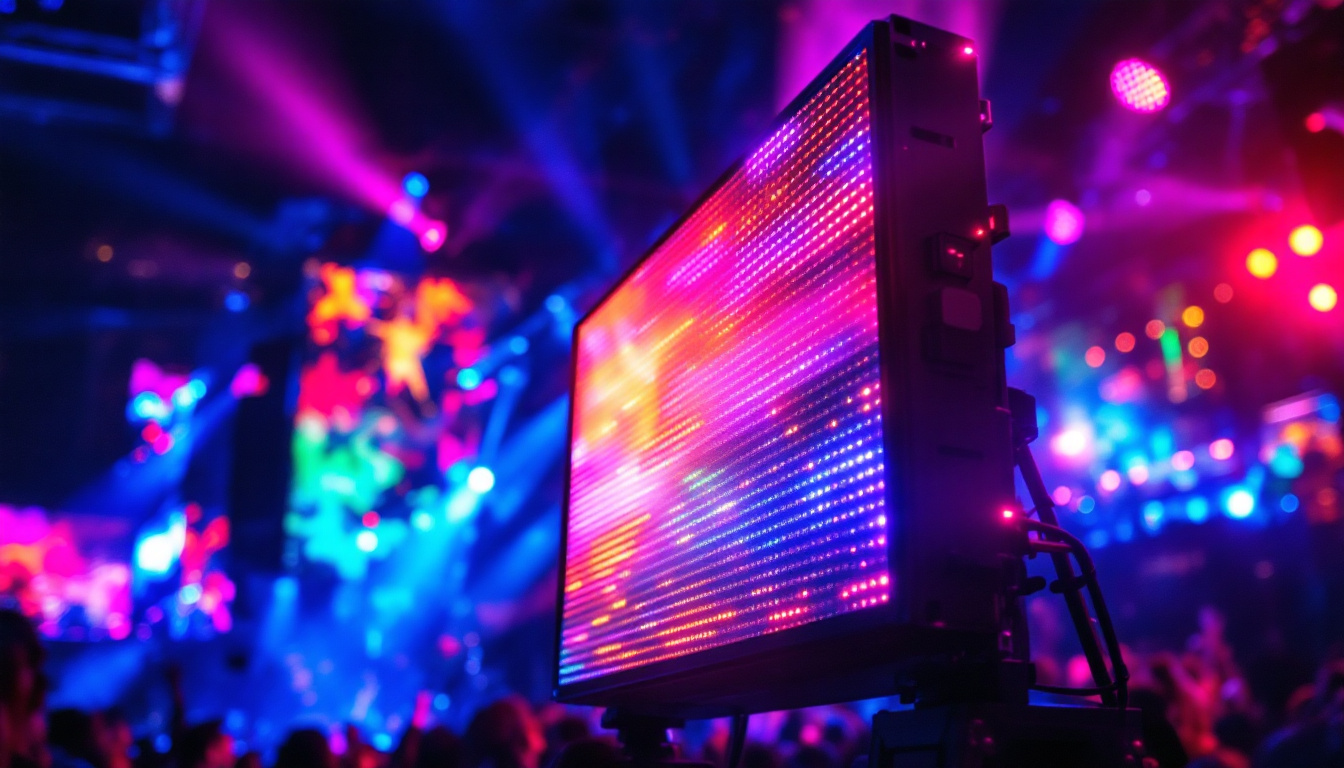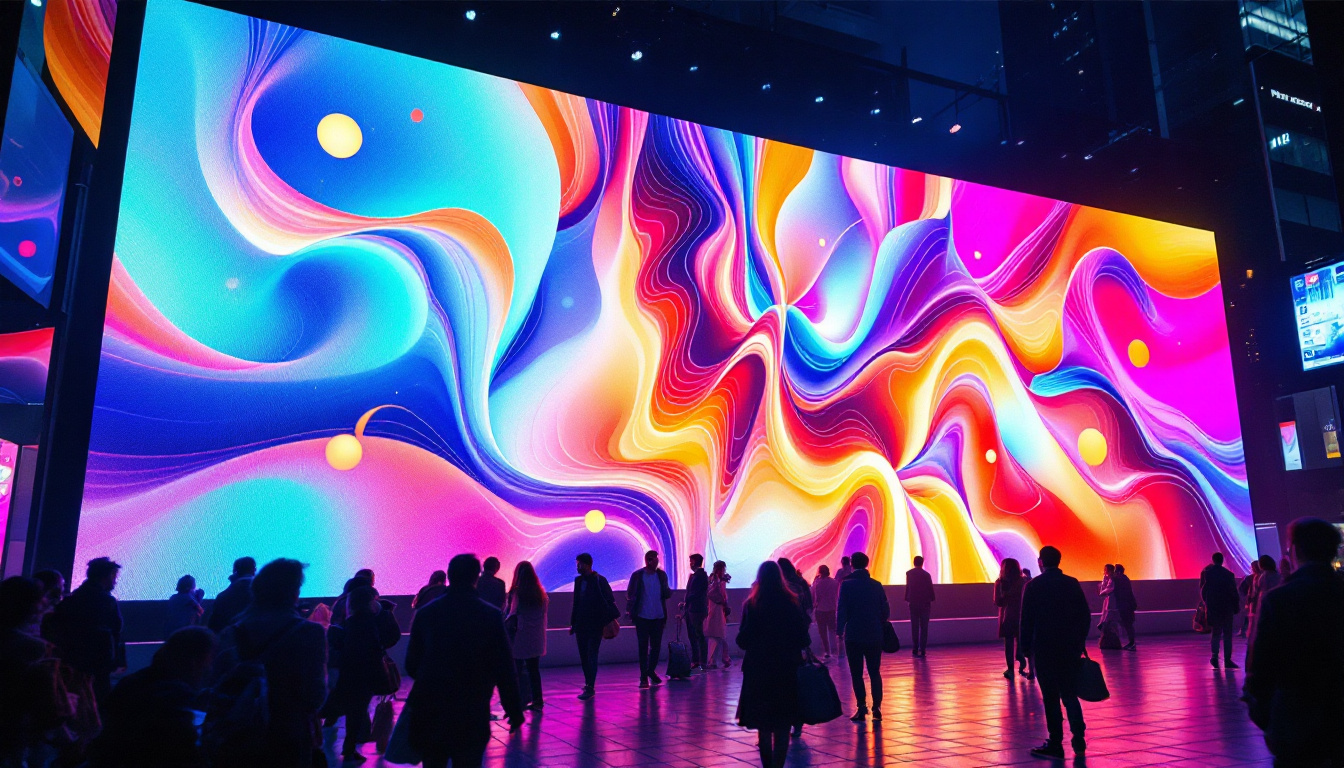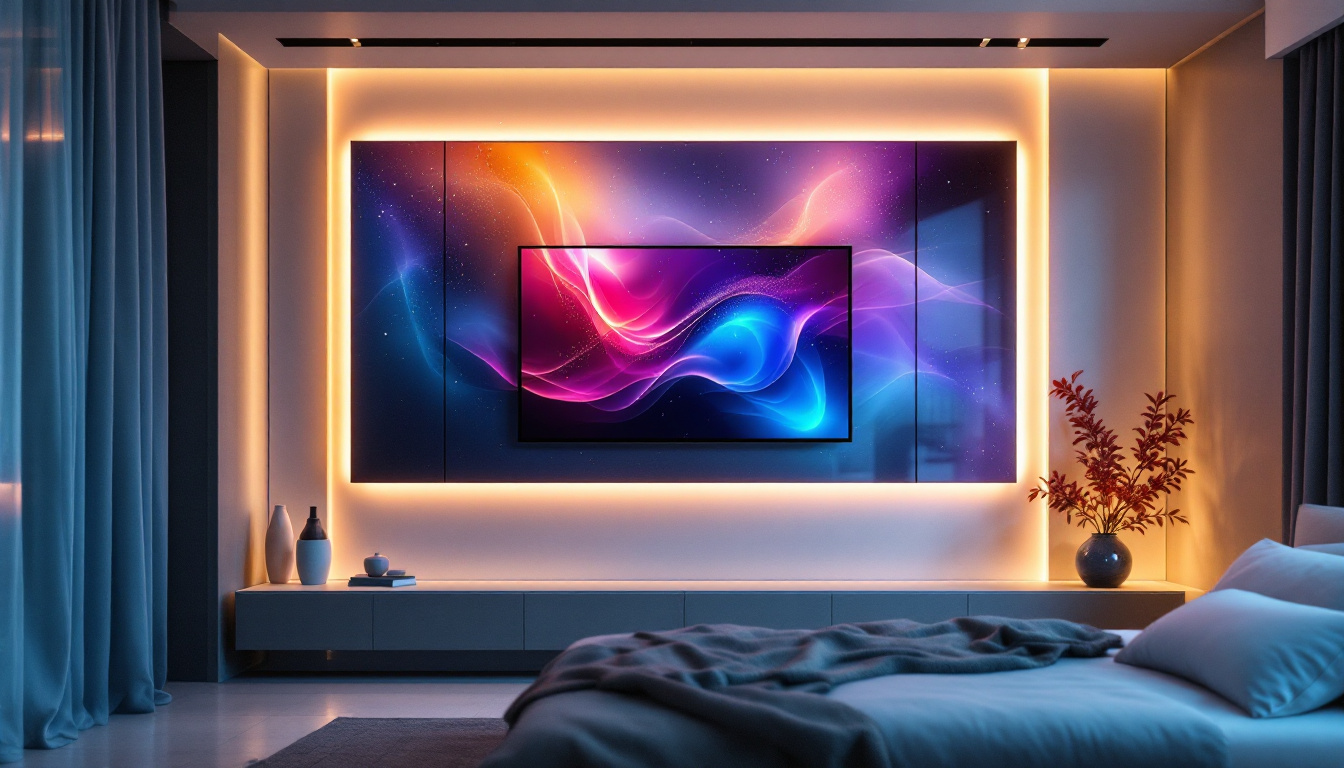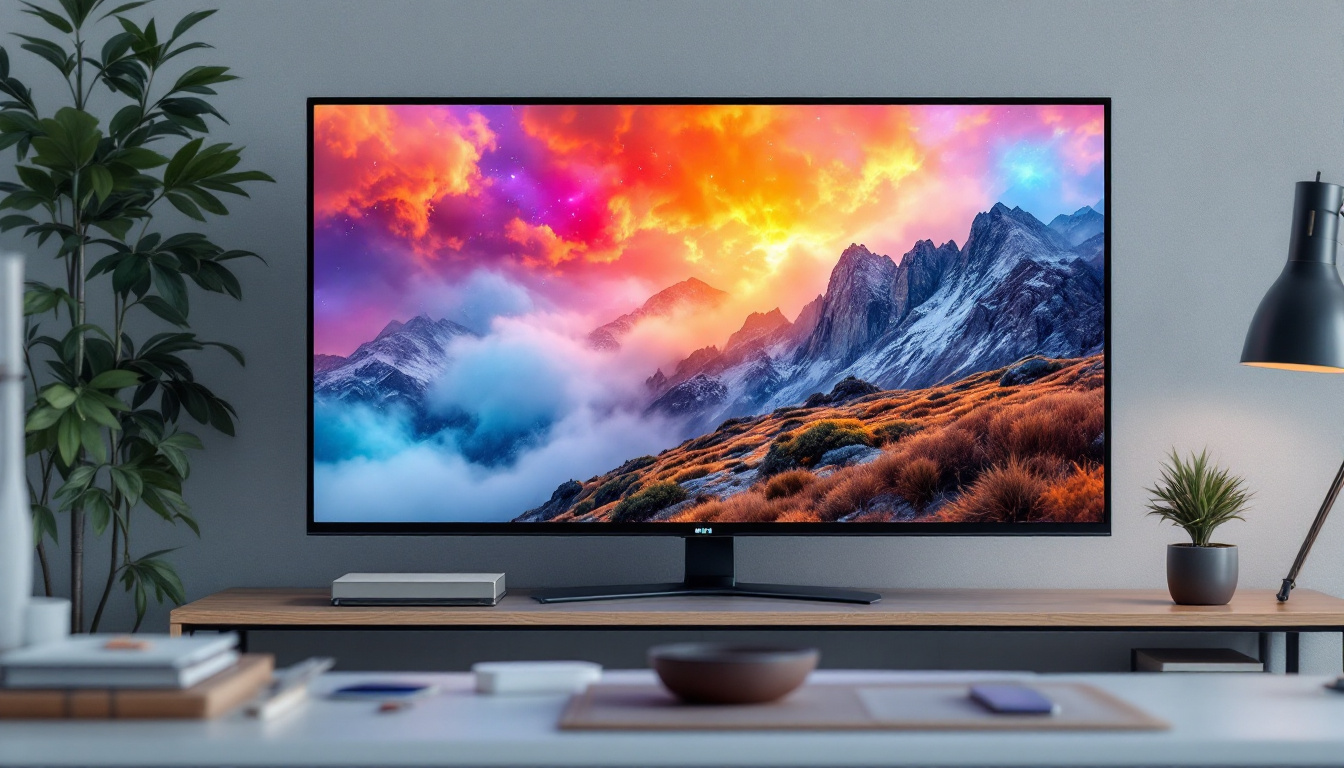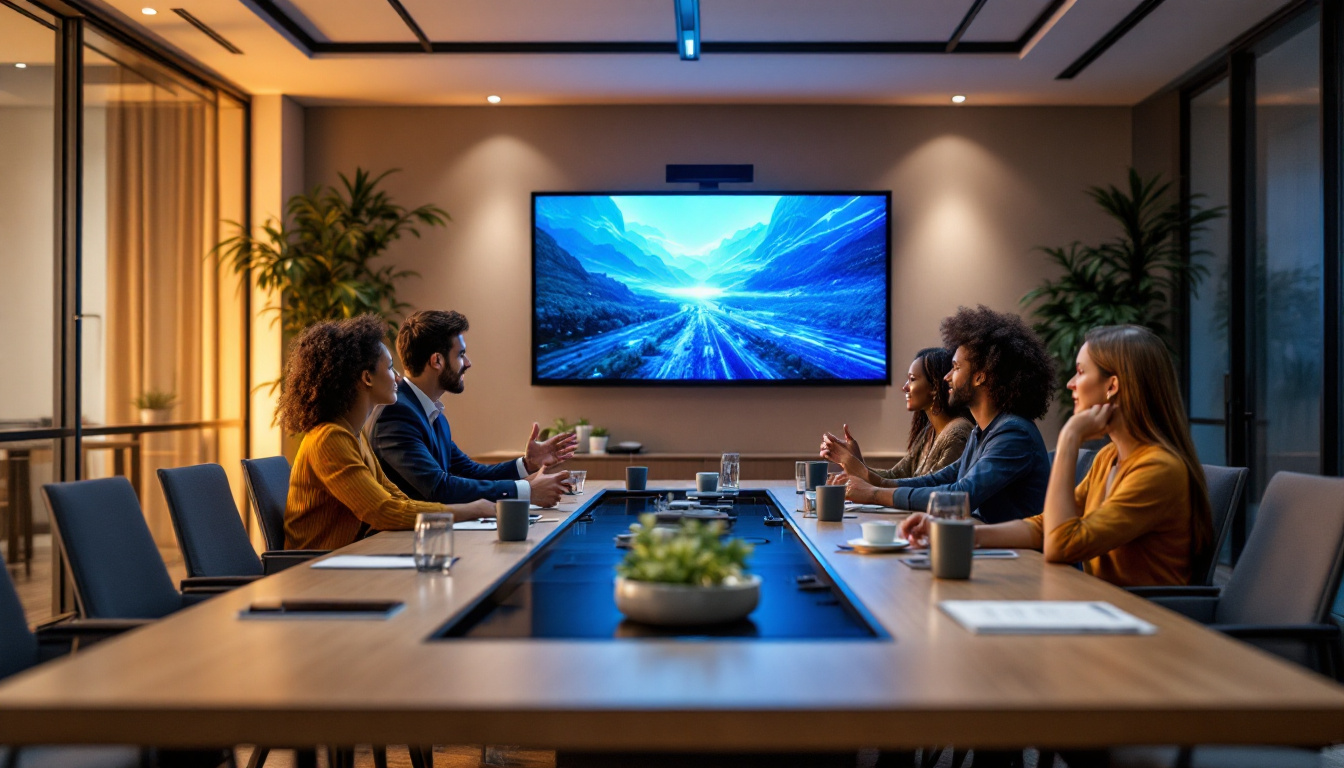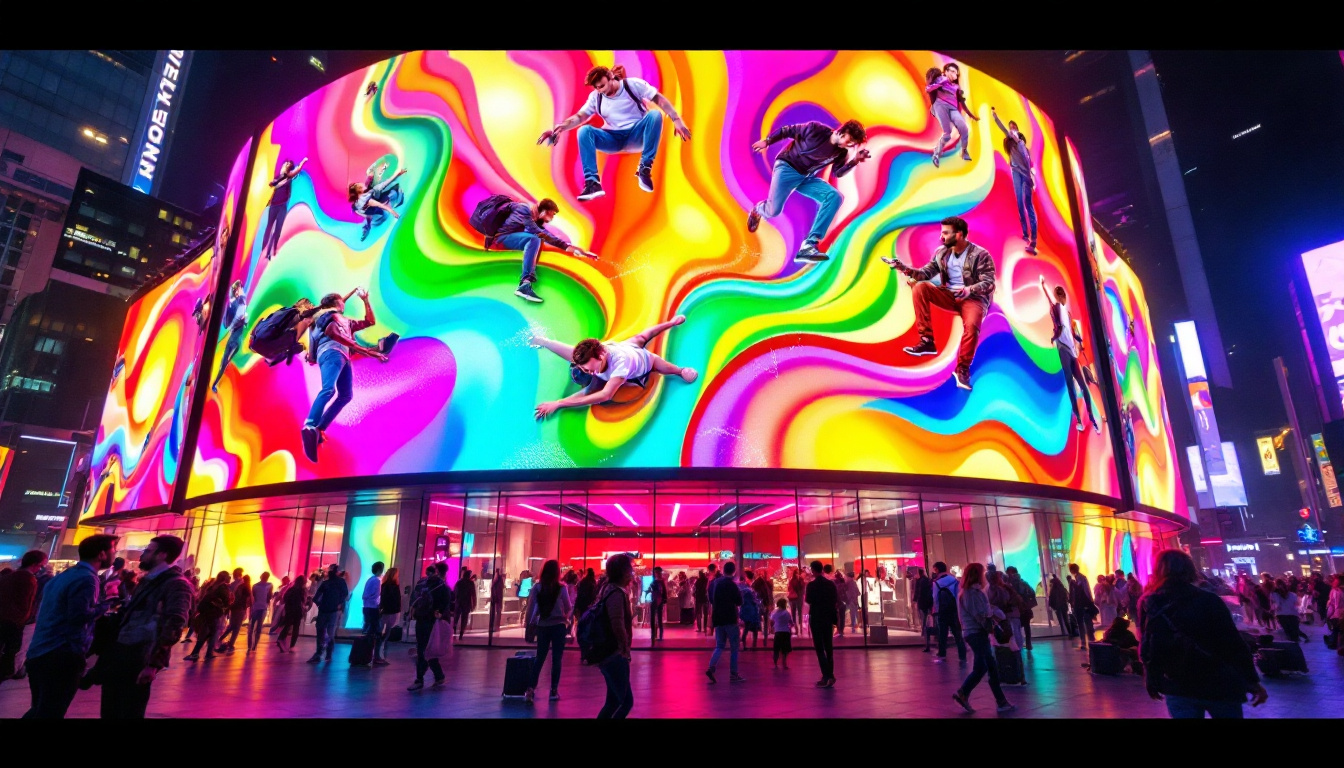In the world of advertising, billboards have long been a powerful medium for capturing attention and conveying messages. With the advent of technology, traditional billboards have evolved into vibrant LED displays that not only enhance visibility but also offer dynamic content. This article delves into the fascinating world of LED billboards, exploring their history, technology, and impact on advertising.
The Evolution of Billboards
From Static to Dynamic
Billboards have been a staple of outdoor advertising since the late 19th century. Initially, they were simple painted signs that conveyed messages to passersby. As time progressed, the introduction of electric lights allowed for illuminated billboards, making them more eye-catching, especially at night. These early illuminated signs often featured bold colors and simple graphics, designed to attract attention and convey messages quickly. The allure of bright lights in urban landscapes created a new form of visual communication that captivated audiences and set the stage for future innovations.
The real game-changer, however, came with the development of LED technology. Unlike traditional billboards, LED displays can showcase moving images and videos, transforming static advertising into engaging visual experiences. This shift has fundamentally altered how brands communicate with their audiences, allowing for more creativity and interactivity. Advertisers can now tailor their messages to specific times of day or events, dynamically changing content to resonate with different demographics. This adaptability not only enhances viewer engagement but also maximizes the effectiveness of advertising campaigns.
Key Milestones in Billboard Technology
The journey from traditional to LED billboards has been marked by several key milestones. The first illuminated billboard was introduced in the 1900s, but it wasn’t until the 1980s that electronic billboards began to emerge. These early models used incandescent bulbs and were limited in their capabilities. Despite their restrictions, they represented a significant leap forward, paving the way for more advanced technologies. Advertisers began experimenting with animation and changing messages, which sparked a new interest in outdoor advertising as a dynamic medium.
With the advancement of LED technology in the 1990s, billboards became more versatile. The ability to display full-color images and videos opened up new avenues for advertisers. Today, LED billboards can be found in urban centers worldwide, featuring high-definition displays that can be updated in real-time. This capability has led to innovative advertising strategies, such as countdowns for product launches or live updates during events. Furthermore, the integration of social media feeds into billboard content has created a two-way interaction, allowing brands to engage with consumers in real-time and foster a sense of community around their products. The evolution of billboard technology continues to inspire creativity, pushing the boundaries of what outdoor advertising can achieve.
Understanding LED Technology
How LED Displays Work
LED stands for Light Emitting Diode, a semiconductor device that emits light when an electric current passes through it. LED displays are made up of thousands of tiny diodes arranged in a grid, allowing for the creation of images and videos. Each pixel in an LED display is made up of red, green, and blue (RGB) diodes, which can be combined in various intensities to produce a wide spectrum of colors. This intricate arrangement enables the display to render high-definition visuals with remarkable clarity, making it a popular choice for everything from advertising to entertainment.
The technology behind LED displays allows for high brightness levels, making them visible even in direct sunlight. Additionally, LEDs are energy-efficient, consuming significantly less power than traditional lighting methods. This efficiency not only reduces operational costs for advertisers but also has a positive environmental impact. Furthermore, LED displays have a longer lifespan compared to conventional lighting solutions, often lasting up to 100,000 hours. This durability translates to lower maintenance costs and less frequent replacements, making them a smart investment for businesses.
Types of LED Displays
LED displays come in various types, each suited for different applications. The most common types include:
- Outdoor LED Billboards: These are large displays typically found in high-traffic areas, designed to attract attention from a distance.
- Indoor LED Displays: Smaller and often used in shopping malls, airports, and event venues, these displays are designed for close viewing.
- Mobile LED Displays: Mounted on trucks or trailers, these displays can be moved to different locations, making them ideal for events and promotions.
Each type of LED display offers unique advantages, allowing advertisers to choose the best option for their specific needs. For instance, outdoor LED billboards are engineered to withstand harsh weather conditions, featuring protective coatings and robust structures to ensure longevity. Indoor displays, on the other hand, often incorporate advanced technologies like high refresh rates and superior color accuracy to enhance the viewing experience in environments where detail matters. Mobile LED displays provide unparalleled flexibility, allowing brands to reach diverse audiences across various events, from concerts to sports games. This adaptability has made LED technology a cornerstone in modern advertising strategies.
Moreover, the rise of interactive LED displays has opened up new avenues for engagement. These displays can incorporate touch-sensitive technology or motion sensors, allowing viewers to interact with the content directly. This interactivity not only captures attention but also fosters a deeper connection between the brand and its audience, making the advertising experience more memorable. As technology continues to evolve, the potential applications for LED displays are expanding, paving the way for innovative marketing solutions that resonate with consumers in today’s fast-paced digital landscape.
The Impact of LED Billboards on Advertising
Enhanced Engagement
One of the most significant advantages of LED billboards is their ability to engage audiences. The dynamic nature of LED displays allows for the presentation of moving images, animations, and videos, which are far more captivating than static images. This engagement is crucial in a world where consumers are constantly bombarded with information.
Studies have shown that LED billboards can increase brand recall and recognition. The combination of visual stimulation and strategic placement in high-traffic areas ensures that messages are not only seen but remembered. This enhanced engagement leads to higher conversion rates, making LED advertising a worthwhile investment for brands.
Real-Time Content Updates
Another remarkable feature of LED billboards is the ability to update content in real-time. Advertisers can change messages based on various factors, including time of day, weather conditions, or current events. This flexibility allows for more relevant and timely advertising, which can significantly improve audience response.
For instance, a restaurant can promote breakfast specials in the morning and switch to lunch offers by midday. This adaptability not only maximizes the effectiveness of the advertisement but also provides a more personalized experience for viewers.
Challenges and Considerations
Cost and Maintenance
While the benefits of LED billboards are substantial, there are challenges associated with their implementation. The initial cost of purchasing and installing LED displays can be significant. However, many advertisers view this as a long-term investment, given the potential for increased revenue through enhanced visibility and engagement.
Additionally, maintenance is a crucial consideration. LED displays require regular upkeep to ensure optimal performance. This includes cleaning, software updates, and potential repairs. Advertisers must factor in these ongoing costs when budgeting for LED billboard campaigns.
Regulatory Challenges
Another challenge faced by LED billboard operators is navigating local regulations. Many cities have strict guidelines regarding the placement and operation of digital billboards. These regulations can include restrictions on brightness levels, animation speed, and content types. Advertisers must work closely with local authorities to ensure compliance, which can sometimes delay the installation process.
Famous LED Billboards Around the World
Times Square, New York City
Perhaps the most iconic location for LED billboards is Times Square in New York City. This bustling area is home to some of the largest and most vibrant LED displays in the world. Brands from all over the globe vie for space in this prime advertising real estate, showcasing everything from fashion to technology.
The sheer scale and brightness of these displays create a mesmerizing experience for visitors, making Times Square a must-see destination for tourists. The ability to showcase high-definition video content allows brands to tell their stories in compelling ways, further enhancing the allure of this famous location.
Shibuya Crossing, Tokyo
Shibuya Crossing is another landmark known for its stunning LED displays. Located in one of Tokyo’s busiest districts, this intersection is surrounded by massive screens that showcase advertisements, news, and entertainment. The combination of bright lights and the hustle and bustle of pedestrians creates an electrifying atmosphere.
These displays are not only effective for advertising but also serve as a cultural touchpoint, reflecting the vibrancy and energy of Tokyo. Brands leverage this unique environment to connect with consumers in innovative ways, making Shibuya Crossing a fascinating case study in outdoor advertising.
The Future of LED Billboards
Technological Advancements
The future of LED billboards looks promising, with ongoing technological advancements poised to enhance their capabilities further. Innovations in display resolution, brightness, and energy efficiency are continually being developed. For instance, the emergence of MicroLED technology promises to deliver even higher-quality images with lower power consumption.
Additionally, the integration of artificial intelligence (AI) and data analytics is set to revolutionize how advertisers approach LED billboard campaigns. By leveraging data on consumer behavior and preferences, brands can create highly targeted and personalized advertisements that resonate with their audiences.
Environmental Considerations
As sustainability becomes an increasingly important consideration for businesses, LED billboards are also evolving to meet these demands. Many manufacturers are focusing on creating eco-friendly displays that minimize energy consumption and utilize recyclable materials. This shift not only appeals to environmentally conscious consumers but also aligns with corporate social responsibility goals.
Furthermore, the use of solar-powered LED displays is gaining traction, offering a sustainable alternative for outdoor advertising. These innovations will likely play a crucial role in shaping the future of billboard advertising as brands strive to balance effectiveness with environmental stewardship.
Conclusion
LED billboards have transformed the landscape of outdoor advertising, offering dynamic and engaging ways for brands to connect with consumers. From their evolution from static displays to the vibrant, high-definition screens of today, LED technology has reshaped how messages are conveyed. While challenges such as cost and regulation exist, the benefits of enhanced engagement and real-time content updates make LED billboards a compelling choice for advertisers.
As technology continues to advance, the future of LED billboards looks bright, with innovations poised to enhance their effectiveness and sustainability. As brands seek to capture the attention of consumers in an increasingly crowded marketplace, LED displays will undoubtedly remain a vital tool in the advertising arsenal.
Illuminate Your Brand with LumenMatrix
Ready to elevate your advertising strategy with the power of LED technology? Discover how LumenMatrix can transform your brand’s visibility and audience engagement. As a pioneer in LED display innovation, LumenMatrix offers a comprehensive range of solutions, from Indoor and Outdoor LED Wall Displays to specialized options like Vehicle, Sports, and Floor LED Displays. Embrace the future of visual communication with our Custom, All-in-One, and Transparent LED Displays. Check out LumenMatrix LED Display Solutions today and start creating unforgettable visual experiences that resonate with your audience.

